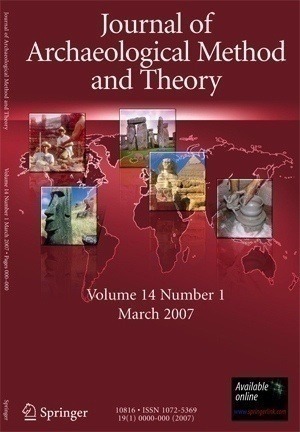What do you think?
Rate this book


Abstract: Level IV of Molodova I, an open-air Middle Paleolithic site in the Ukraine has been described by some researchers as a possible source of evidence for early symbolic behavior. We examined bone objects from this layer that were identified by Ukrainian researchers as exhibiting possible Neandertal produced engravings including two anthropomorphic figures. While we have determined that there is no evidence of symbolic activity at Molodova I, the database we have created, with its systematic recording of traces left by taphonomic agents on faunal remains, provides a better understanding of the overall site taphonomy.
Dating European Palaeolithic Cave Art: Progress, Prospects, Problems (pp. 27-47)
Paul Pettitt, Alistair Pike
Abstract: Over the last decade several dozen direct dates on cave art pigments or associated materials have supplemented more traditional style-based attempts to establish a chronological (and developmental) scheme for cave art. In the “post-stylistic” era an holistic integration of pigment “recipe” analysis, formal stylistic analysis and direct chronometric dating have been applied to a handful of dates. Here, we examine the state-of-the-art of Palaeolithic cave art dating, with particular emphasis on certain radiocarbon and Uranium-series projects. We examine the relative successes and weaknesses of this cutting edge science. We conclude that there are several weaknesses in current applications that are in serious need of addressing. Issues of sample contamination and of the heuristic relationship between materials dated and the production of the art are particularly problematic. It follows that one should at present be very cautious about straightforward interpretations of apparent “dates” of cave art.
The Hidden Meaning of Forms: Methods of Recording Paleolithic Parietal Art (pp. 48-80)
Carole Fritz, Gilles Tosello
Abstract: There are many restrictions placed on researchers studying Paleolithic Cave art due to the constraints of conservation that limit direct contact with the original works. This paper discusses how recent advances in technology have revolutionized the study and interpretation of Paleolithic cave art. The interpretation of Paleolithic symbolic systems is a complex process and hypotheses must be applied to cave art with the greatest of precision. A detailed analysis of the painted or engraved surfaces leads to a greater understanding of both the techniques employed and the actual sequence in which parietal compositions were executed. By unlocking the creative process followed by Upper Paleolithic artists we are able to glimpse the artist’s motivations and to understand a portion of the art’s hidden meaning.
The Upper Paleolithic Rock Art of Iberia (pp. 81-151)
Nuno Bicho, Antonio F. Carvalho, Cesar González-Sainz, Jose Luis Sanchidrián, Valentín Villaverde, Lawrence G. Straus
Abstract: Nearly 200 rock art sites of Upper Paleolithic age are currently known on the Iberian Peninsula, in both caves and the open air. Over half are still concentrated in Cantabrian Spain and they span the period between c. 30–11 kya, but–tracking the course of human demography in this geographically circumscribed region–many of the images were probably painted or engraved during the Solutrean and, especially, Magdalenian. Dramatic discoveries and dating projects have significantly expanded the Iberian rock art record both geographically and temporally in recent years, in close coincidence with the growth of contemporaneous archeological evidence: cave art loci in Aragón and Levante attributable to the Solutrean and Magdalenian, many cave art sites and a few open-air ones in Andalucía and Extremadura that are mostly Solutrean (in line with evidence of a major Last Glacial Maximum human refugium in southern Spain), the spectacular Côa Valley open-air complex in northern Portugal (together with a growing number of other such loci and one cave) that was probably created during the Gravettian-Magdalenian periods, and a modest, but important increase in proven cave and open-air sites in the high, north-central interior of Spain that are probably Solutrean and/or Magdalenian. Despite regional variations in decorated surfaces, themes, techniques and styles, there are broad (and sometimes very specific) pan-Iberian similarities (as well as ones with the Upper Paleolithic art of southern France) that are indicative of widespread human contacts and shared systems of symbols and beliefs during the late Last Glacial. As this Ice Age world and the forms of social relationships and ideologies that helped human groups survive in it came to an end, so too did the decoration of caves, rockshelters and outcrops, although in some regions other styles of rock art would return under very different conditions of human existence.
Errata (p. 152)
152 pages, Paperback
First published March 1, 2007